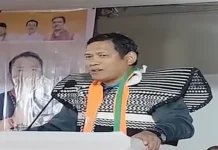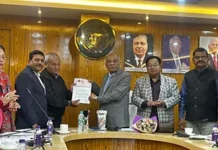[ By Rupesh Dutta ]
A government’s success in making militants or armed extremists surrender is incomplete without rehabilitating them in the main society. Though the Indian Government and many of the federal ones have with time to time worked on their surrender and rehabilitation policy, the surrendered cadres of various outfits still have not retrieved the lost ground for which they usually give up arms. Any state government’s role of rehabilitating such citizens is of utmost importance as it not just paves way for more of similar cadres to give up the path of armed extremism against the state but also acts as a deterrent for the young ones tilted towards such obscure paths to join such movements.
Chhattisgarh Chief Minister Bhupesh Baghel’s recent call at the NITI Ayog’s governing council meet to go tough on the surrendered Maoists and change the surrender and rehabilitation policies to allow legal cases to continue against armed outfit’s senior leaders can cause backfire. The idea will not just obstruct the existing peace negotiations between various of the outfits and the government but also jolt the rise in surrendering of militants in various states. In the recent years after the Narendra Modi government came in there has been a spree in young cadres of outlawed groups giving up arms and joining the main stream.
Chhattisgarh, a state that has witnessed one of the wildest Maoists movements apart from Jharkhand, Odisha among others, in the recent times have seen the highest number of surrenders of the cadres from various outfits. In 2018 alone, over 250 cadres gave up arms to join the main stream with the highest being 62 militants in November same year. Similarly in North East, nearly 75 cadres of various outfits such as NSCN (Reformation), NDFB (S) and others from similar groups in Manipur gave up their arms to be in the main stream.
Now the question arises, should the Centre or the federal governments contradict their own rules by making changes in the rehabilitation and surrender policies. While the governments have come up with various kinds of schemes, including skill development and training, to support the young cadres to merge back in the main stream, any move to tighten proceedings against them may backfire and has the potential to prevent the cadres from surrendering.
Currently majority of such leaders, part of peace talks with the government, have cases against them. For example Anup Chetia of the ULFA (Pro-talk) faction has criminal cases against him and is out on bail. He and many of other leaders like Arabinda Rajkhowa (ULFA-Pro-Talk), Gobinda Basumatry of NDFB (Progressive) among others chose to come on the negotiation table only after having faith on the Government’s policies.
Let the legal course take its own way in its due time without much stress as the subject being a critical one and government’s motive remains to bring back most of citizens taken up arms for a cause against the government.
A militant once back to the society needs to be rehabilitated. Apart from the ire of the public, such people also take time to get adjusted in the society and take up any work for their living. In the recent times, state governments have spent hundreds of crore for providing various kinds of training to the surrendered cadres. Once suggested a work for sustaining their life, there are less chances that such surrendered cadres would return back to jungles.
If the NITI Ayog takes up seriously any such proposal suggested by Baghel, it will strike at the core of the principle of surrender, and senior Maoists and extremist leaders may simply choose not to surrender under these circumstances. In such a situation it is the Government which is at a loss. Today is an era when the armed revolution is itself at its fag end and majority of the cadres are willing to give up arms and settle back in the society. In such a situation, the Government cannot afford to take risk and lose the game already half won.
It is the belief of the Government of India that through a holistic approach focused on development and security-related interventions, the Left Wing Extremism (LWE) problem can be successfully tackled.What is required is restructuring the rehabilitation programmes in a positive way and help the number of surrenderee to go up. After all, the information gathered from such cadres are helpful in tackling the remaining ones who continue with the outfit. This may also cut down the Governments’ hundreds of crore expenses incurred in fighting the Left Wing Extremism and the militancy in North East.
Currently, Centre’s surrender and rehabilitation policy does not take away pending cases against the surrendered cadres, but allows room for manoeuvre. It allows cases in the courts against the surrenderee facing heinous crimes. It is up to the states if they consider providing free legal services / advocate to the surrendered naxalite as per the policy. The Government can also constitute fast track courts may for speedy trial of cases against surrenderees. However, in Chhattisgarh government situation depends on the assessment and behaviour of the surrenderee. A sub-committee of the Cabinet is authorised to take a decision on revoking pending cases. There is a need for a softer rehabilitation policy to get the surrenderee rehabilitated and not shoo them away from joining the mainstream.
(Rupesh Dutta is a New Delhi based Senior Journalist. He writes on India’s North East, South East Asia and conflict affairs)



